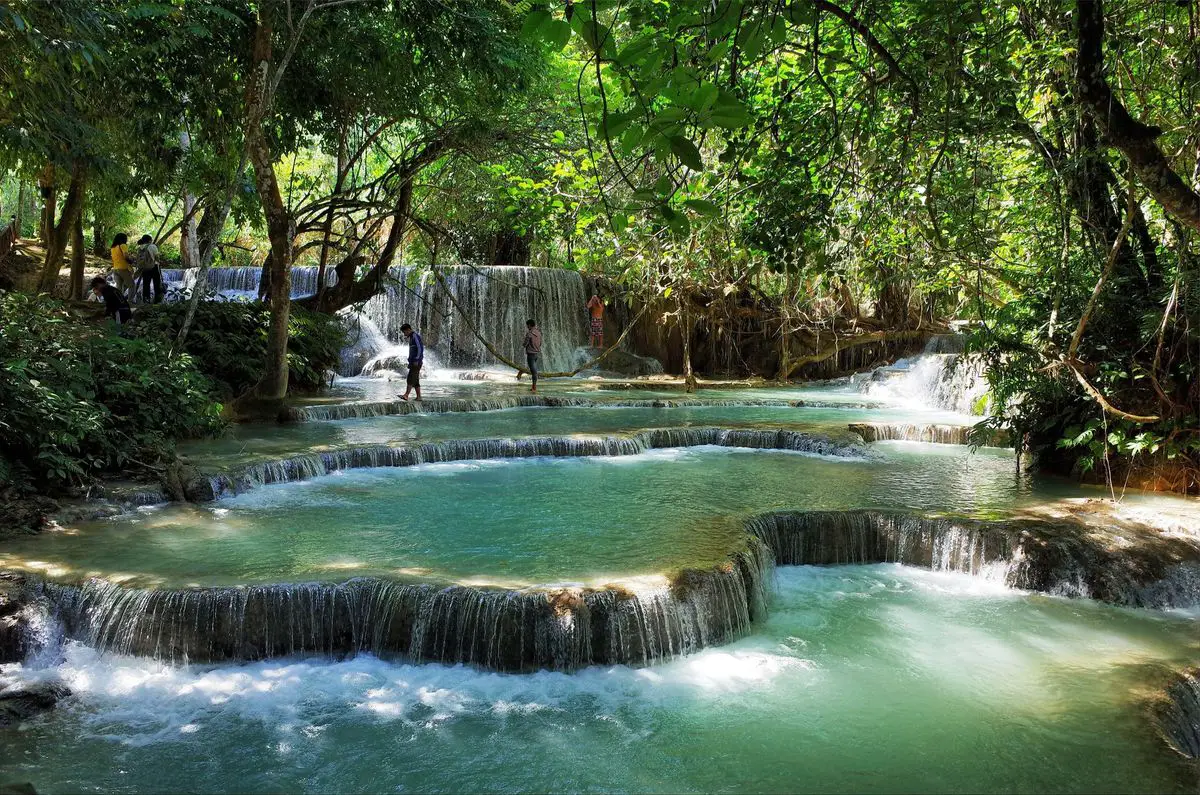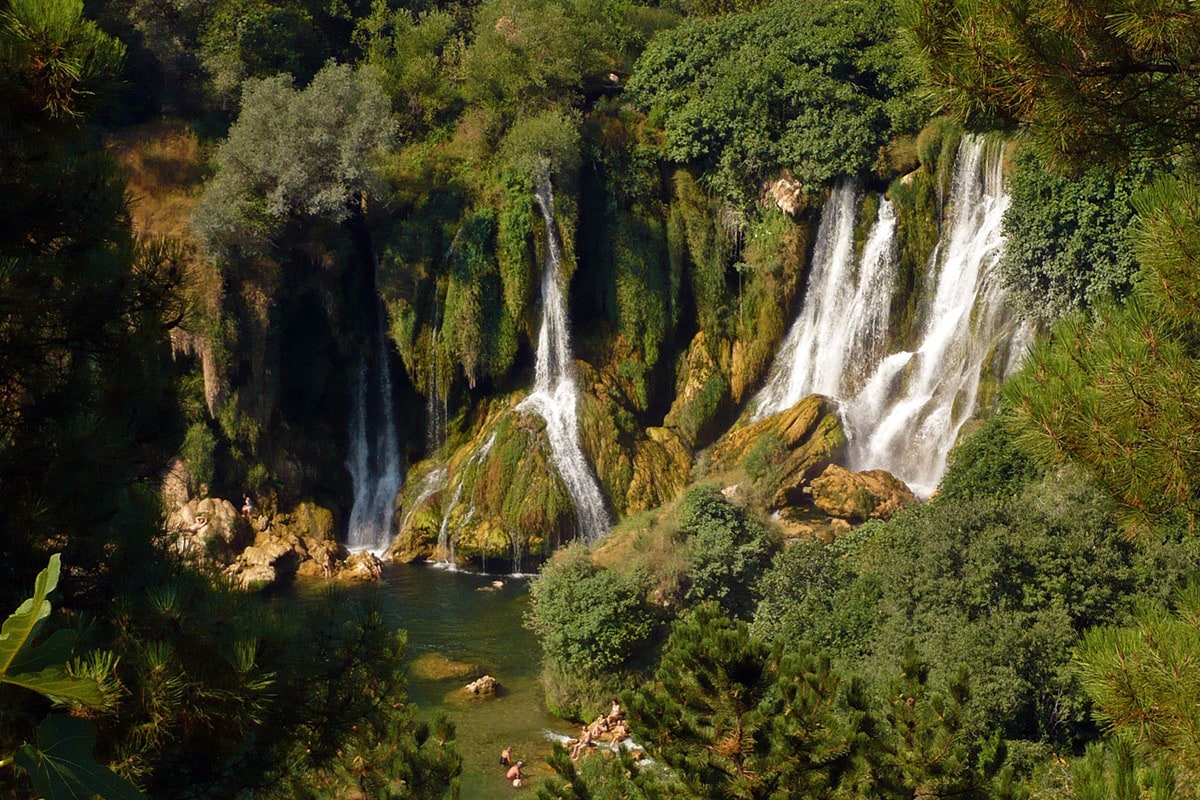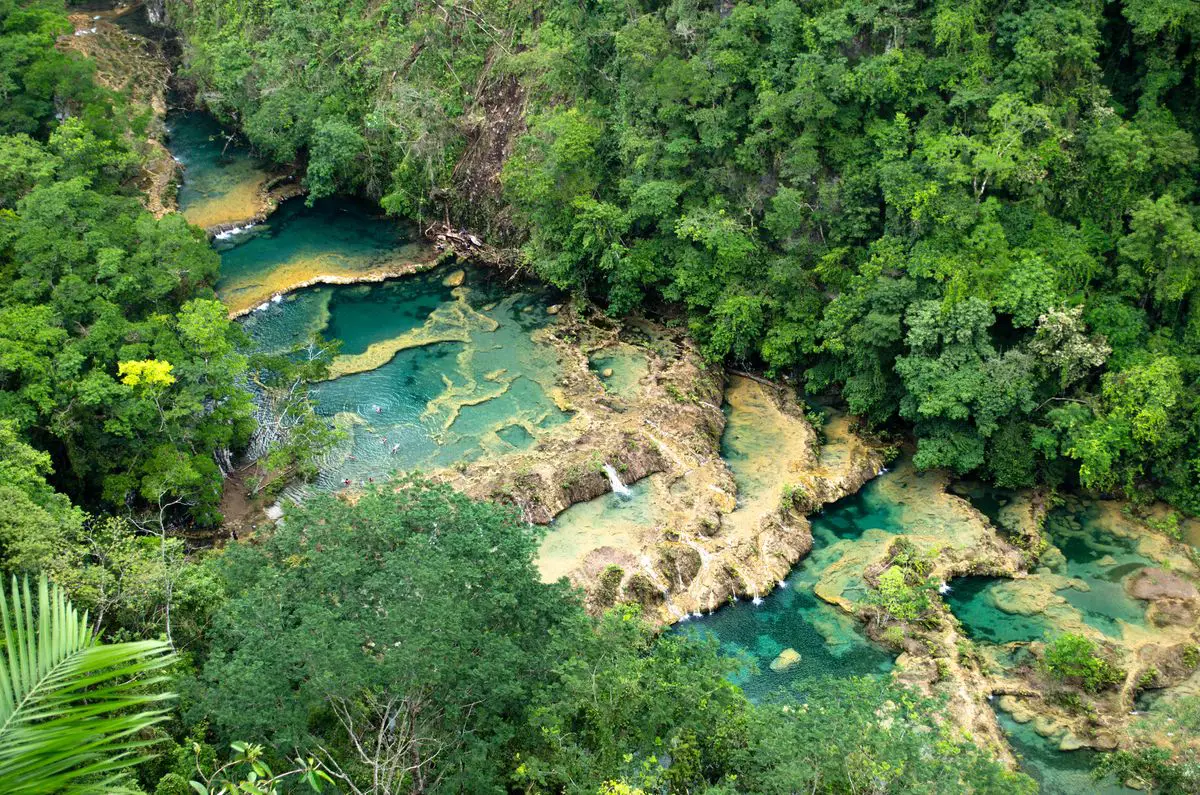Wondermondo 🢖 Categories of wonders 🢖 Geological wonders 🢖 Springs 🢖 Spring tufa, travertine, and other formations
Category
Spring tufa, travertine, and other formations
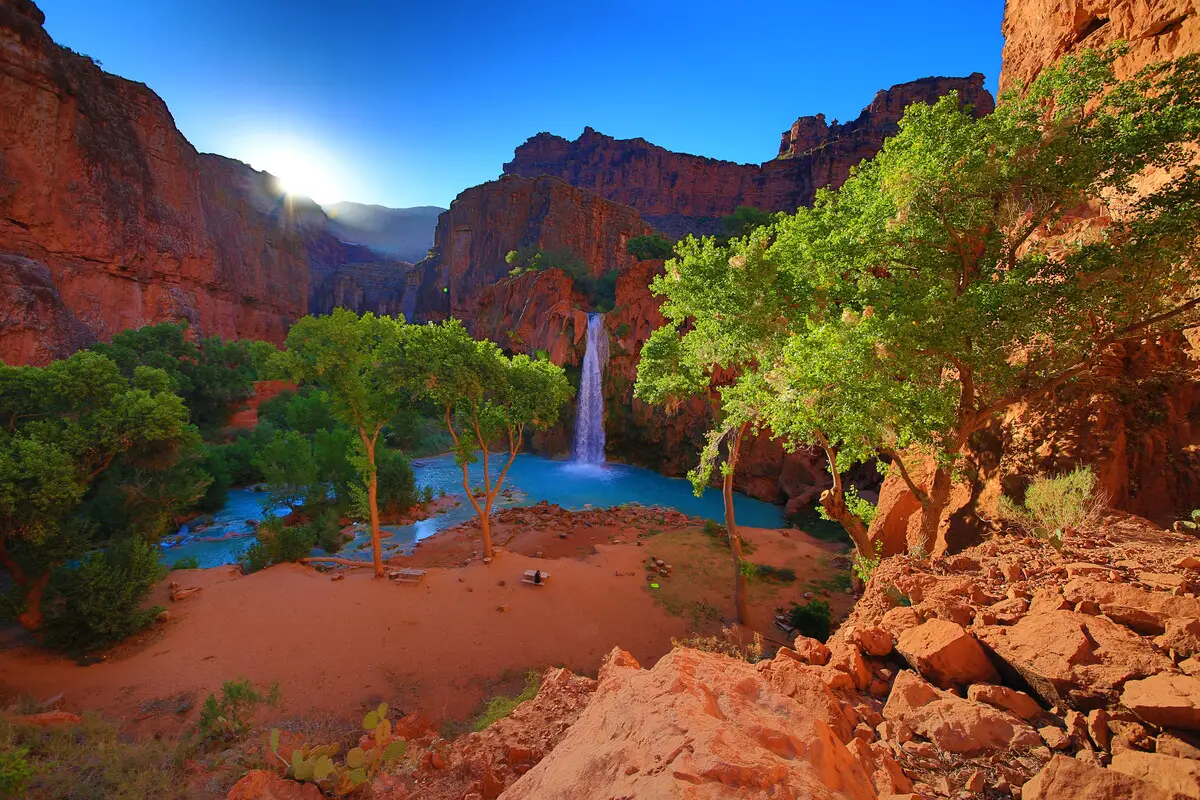
 Described spring tufa, travertine and other formations
Described spring tufa, travertine and other formations
If you see this after your page is loaded completely, leafletJS files are missing.
 What is included in this category?
What is included in this category?
This category includes very diverse landmarks which have one thing in common: all of them are created by springs that are depositing chemical sediments – silica, carbonates, salt, or other chemical compounds.
Tufa, travertine or sinter?
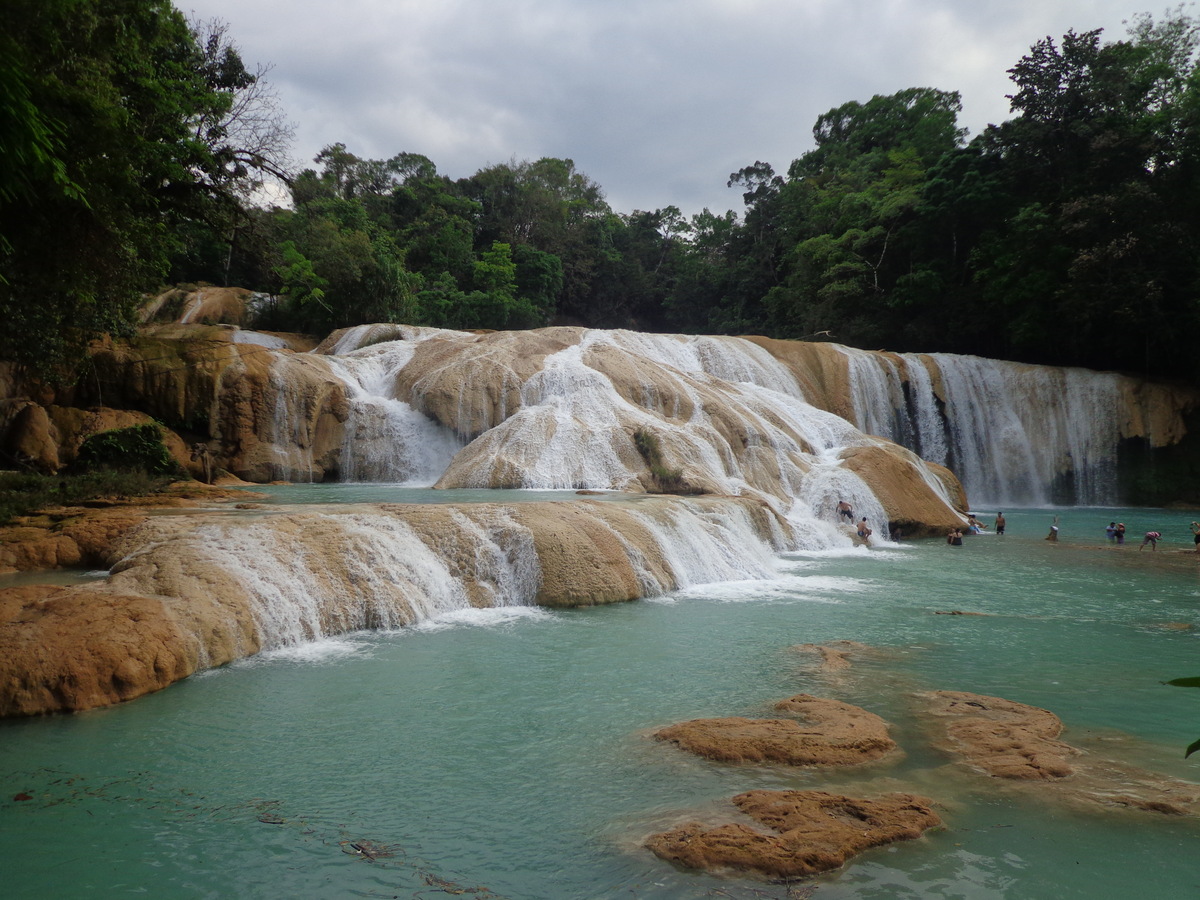
In the scientific literature there are very different terms that describe this phenomenon. Usage of these terms is not universally accepted and there is some confusion regarding their usage. Some of the most popular terms are listed below:
Tufa
Calcareous (lime) and porous deposits formed by waterbodies with ambient temperature, for the most part – springs.
Spring water often contains dissolved lime. When the water reaches the surface and air, lime is precipitated: right at the mouth of the spring or after some distance. Such sediments are porous, and light and are called tufa. It is a popular construction stone – when it is mined, it can be easily formed and cut but over time it becomes hard.
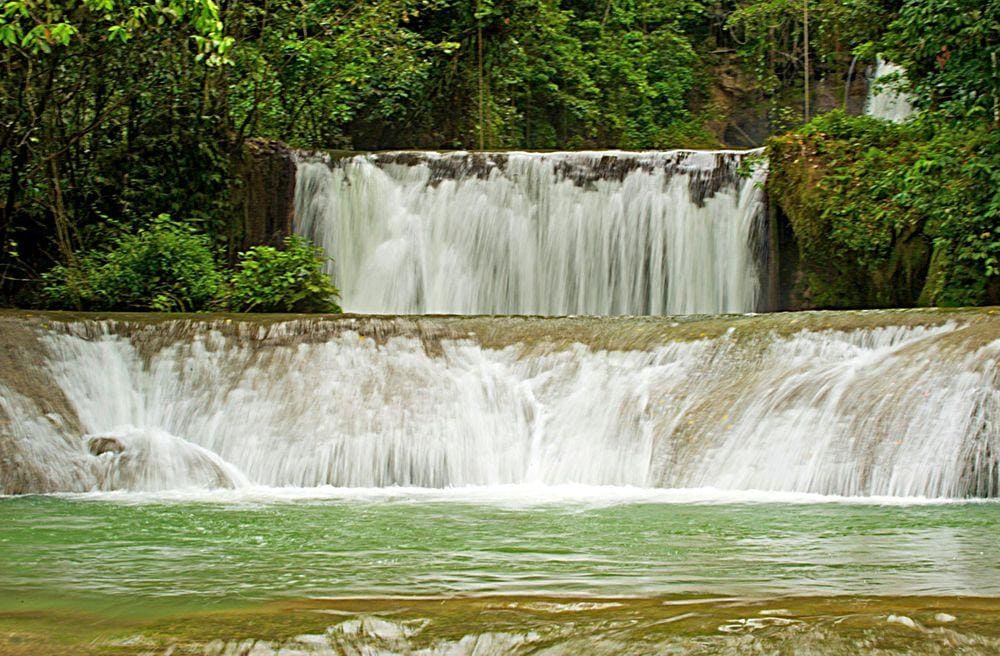
Tufa formations are very diverse and often – amazing and beautiful. Many times tufa is deposited along the waterfalls of the streams formed by springs. Such waterfalls sometimes are very high – Anisakan Falls in Burma has a total height of approximately 320 m, all lined with tufa.
Tufa often forms natural barrages – natural dams, turning the spring-fed rivers into a chain of small lakes, divided by tufa dams and linked by waterfalls falling over these dams. Such tufa dams have formed such amazing monuments of nature as Plitvice Lakes (Croatia) or Semuc Champey (Guatemala).
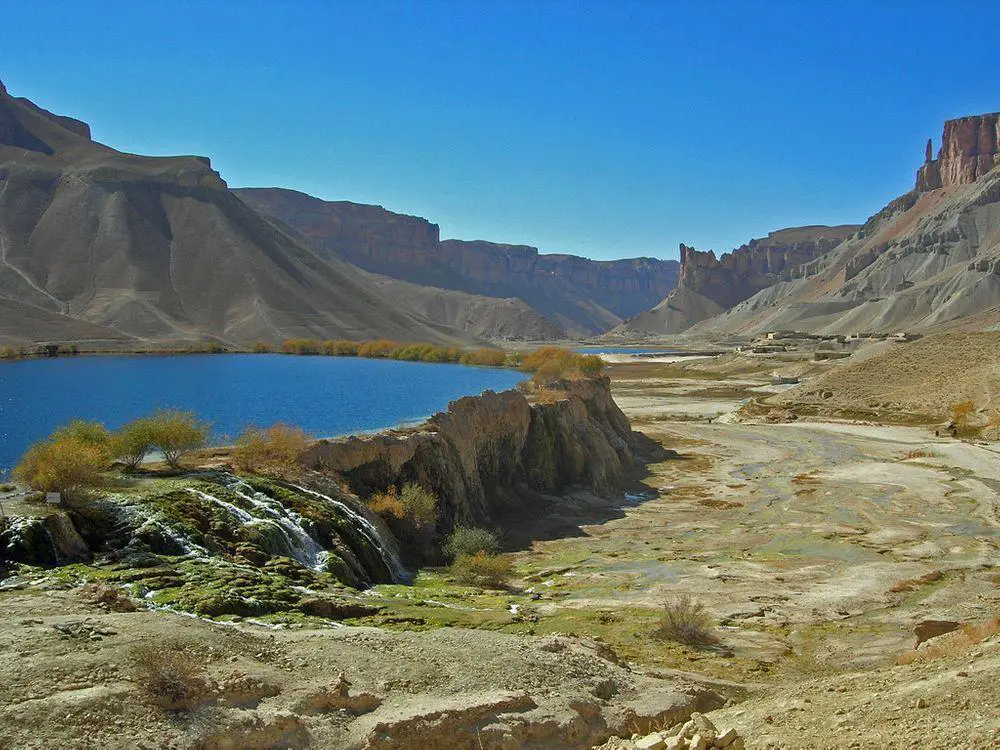
Amazing type of tufa formations is tufa walls – wall shaped tufa formations with spring stream floating on top of these natural "aqueducts". An amazing example is Usterling Wachsender Felsen in Germany, Bavaria.
Tufa serves as great media for plant growth and often tufa formations are covered with beautiful moss cover and other plants. An amazing example is Dard Springs (France).
Travertine
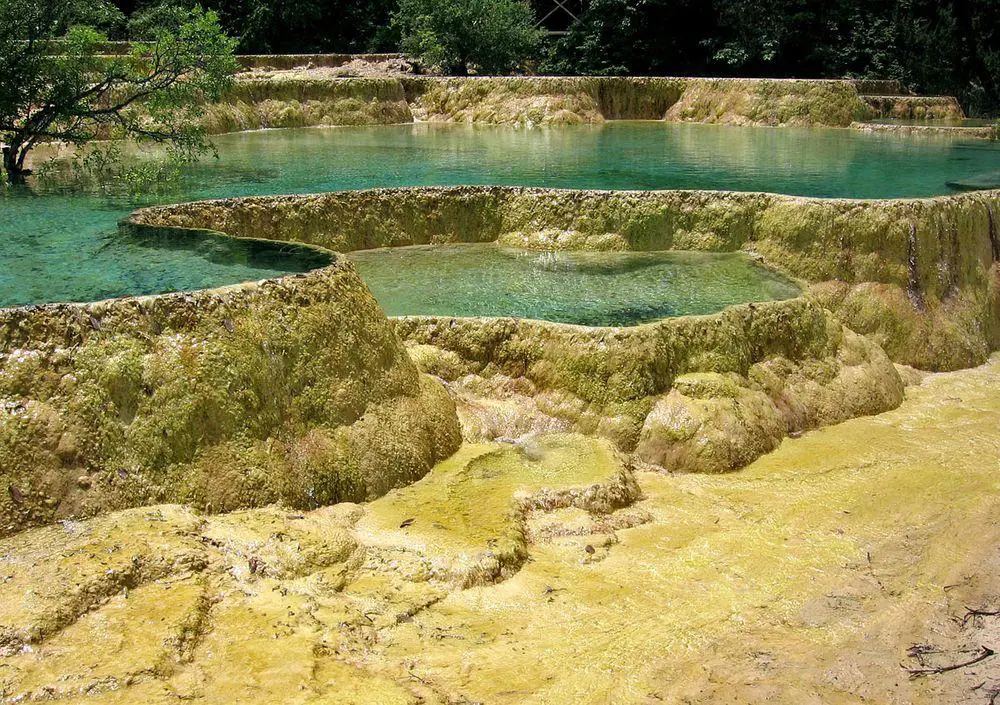
If lime deposits are created by thermal springs or if deposits are slowly created in media without much life (e.g. in caves), lime is much denser. Such dense sediments of lime are called travertine. In fact, the word “travertine” often is referred also to cold (ambient) water formations, and the border between the terms "tufa" and "travertine" is not firmly set.
Travertine formations often are beautiful and form such world-class landmarks as travertine terraces, e.g. Pamukkale (Turkey) or Huanglong (China). Similar to tufa, also travertine forms natural barrages, there are many travertine waterfalls with hot water flowing over it.
Sinter
Any deposits which have been naturally fused together by heat or pressure (without melting them), can be called sinters.
Springs can not create such conditions – both carbonates and silicates need higher temperatures and pressure for sintering than hot springs can provide. Nevertheless, the hard porous silicate or (sometimes) carbonate sediments of hot springs are called sinters.
Terraces, rimstone pools and gours
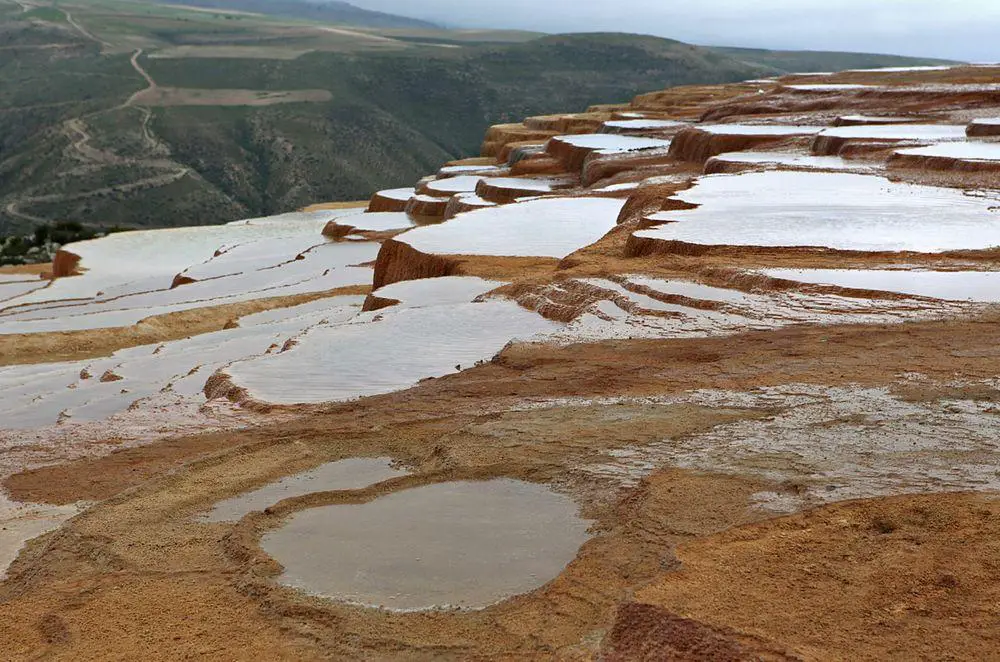
Some of the most amazing formations which can be created by springs are natural terraces consisting of numerous rimstone pools (sometimes called also gours). These natural formations occur in cases when mineral-rich spring water spreads in a thin layer and flows down the slope. Soon the deposits form small ridges, water falls over these ridges and exactly on the rim of these ridges the sedimentation is faster than elsewhere – these rims rise upwards. Thus over time form natural terraces consisting of numerous smaller lakes – rimstone pools. In order to form clean, large, and beautiful terraces, there is needed constant flow of mineral-rich water and little impact from elsewhere, e.g. plant growth, and impact of human and animal feet. Impressive rimstone pools form in caves (here they often are called gours)- the most impressive could be the giant gours in Khoun Xe cave, Laos.
There are beautiful examples of rimstone pools above the ground too. Millions of tourists visit the beautiful Pamukkale (Turkey), Mammoth Hot Springs (United States), or Huanglong (China). Less known are the beautiful and unique Dallol salt springs (Ethiopia) or the unbelievable Rabbitkettle Tufa Mound (Canada) and some other sites.
 Top 25 spring tufa, travertine and other formations
Top 25 spring tufa, travertine and other formations
Africa
Dallol hot springs and geysers
Ethiopia
One of the visually most outstanding places on Earth, the hot springs have a high salt concentration that has shaped terraces and other formations of very bright, unusual colors. Among the hot springs, there is also a salt geyser – possibly the only one in the world.
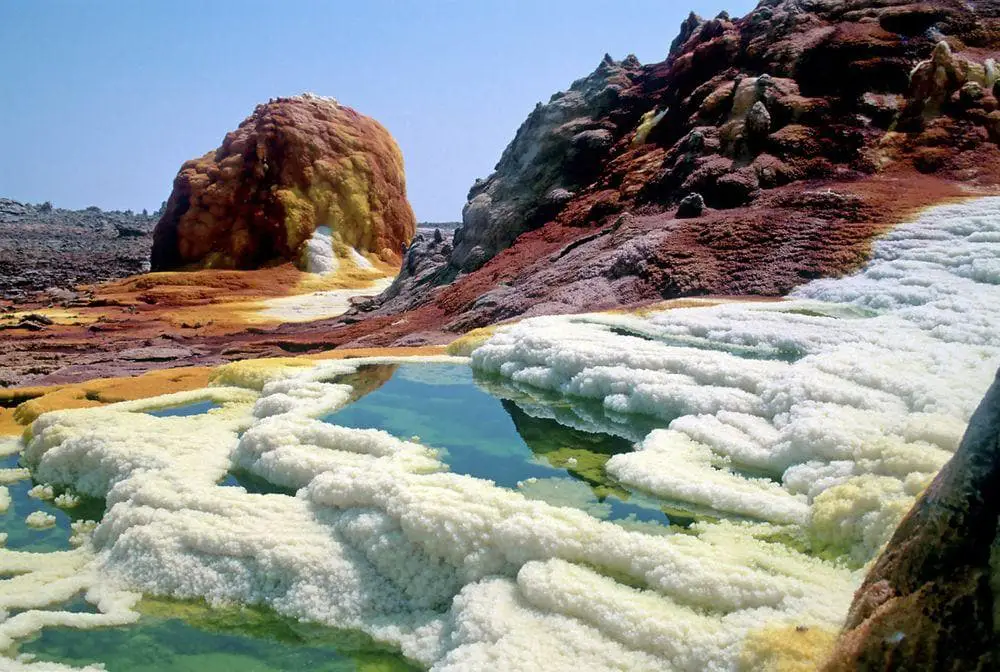
Hammam Meskoutine
Algeria
Group of hot springs that have formed giant travertine terraces. The discharge of the hottest spring (98° C) is 1650 l/min. Used for bathing since Roman times.
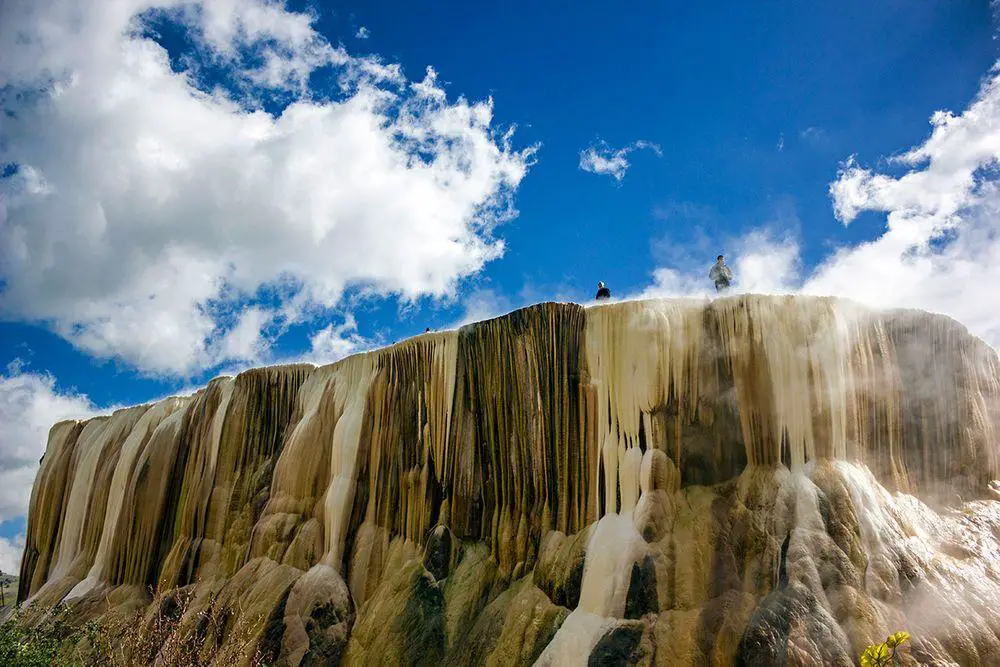
Asia
Pamukkale
Turkey
Some of the best-known travertine terraces in the world, in a bright white color, 2700 meters wide and up to 160 meters high. Terraces have been shaped by 17 hot springs.
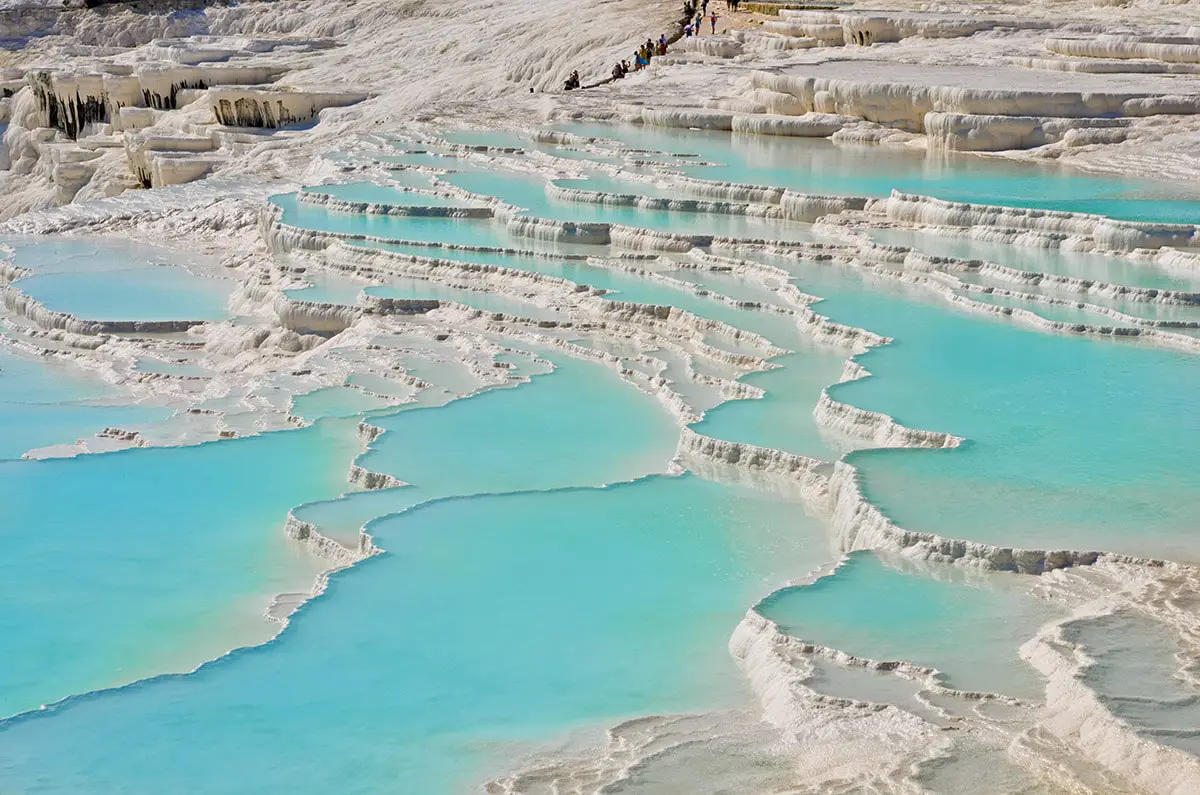
Huanglong Valley
China
Possibly the largest travertine terraces in the world, they extend for 3.6 kilometers and are deposited by mildly thermal springs.
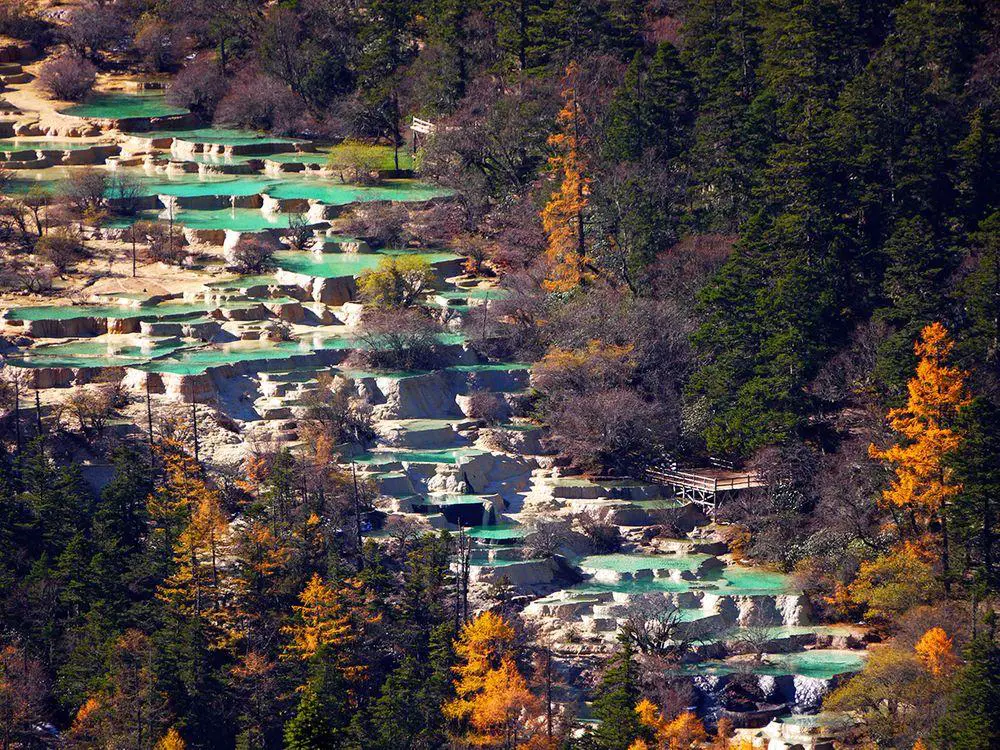
Jiuzhai Valley (Jiuzhaigou)
China
Valley with impressive tufa formations – terraces, waterfalls, and deep blue-green lakes. Includes the impressive, 40 m tall, and 162.5 m wide Pearl Shoal Waterfall and beautiful, 20 m tall and 320 m wide Nuorilang Falls that are also falling over tufa formations. Here are also Shu Zheng Lakes – 19 lakes divided by tufa walls and Nuorilang Lakes – a group of 18 such dammed lakes. Especially beautiful is Fairy Pool – a group of impressive tufa terraces.
Baishuitai
China
These are some of the largest and most beautiful travertine terraces in the world. This natural landmark is closely tied to the unique Dongba cultural tradition.
Kuang Si Falls (Kwangsi)
Laos
Waterfalls over the tufa formations have formed there numerous blue pools. The total height of cascades is 60 – 50 m.
Wawolesea travertine terraces
Indonesia
White travertine terraces at the sea, formed by thermal springs. The site includes a natural hot water fountain.
Garm-Chashma
Tajikistan
A sacred place for Garm people (there was a sanctuary above the springs) – a travertine mound with 400 m wide terraces formed by thermal springs. Here are located nine – ten spouting springs with 0.1 – 1.2 m high fountains, the temperature of the water is roughly 59° C. At the end of the 19th century here still were found geyser pearls. Water has powerful healing properties, especially for diverse forms of dermatitis.
Australia and Oceania
Wai-O-Tapu
New Zealand
One of the most beautiful geothermal areas worldwide. Besides the Lady Knox geyser, mud pools, numerous hot springs, and sinter terraces it contains a highly unusual hot spring – Champagne Pool, constantly filled with carbon dioxide bubbles. Along the rim of this spring are deposited bright orange arsenic and antimony salts.
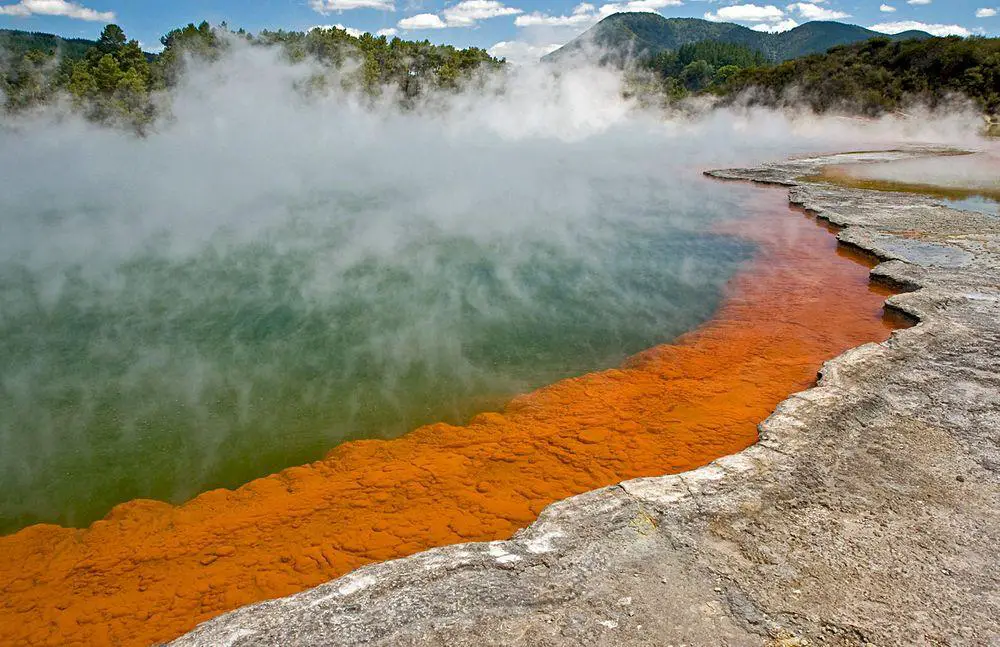
Orakei Korako
New Zealand
A geothermal area with unique, colorful sinter terraces and geysers. The largest geyser field in New Zealand with some 35 active geysers. The lower terrace – Emerald Terrace – is the largest sinter terrace in New Zealand. Part of it is flooded by a hydropower station, submerging some 200 hot springs and 70 geysers.
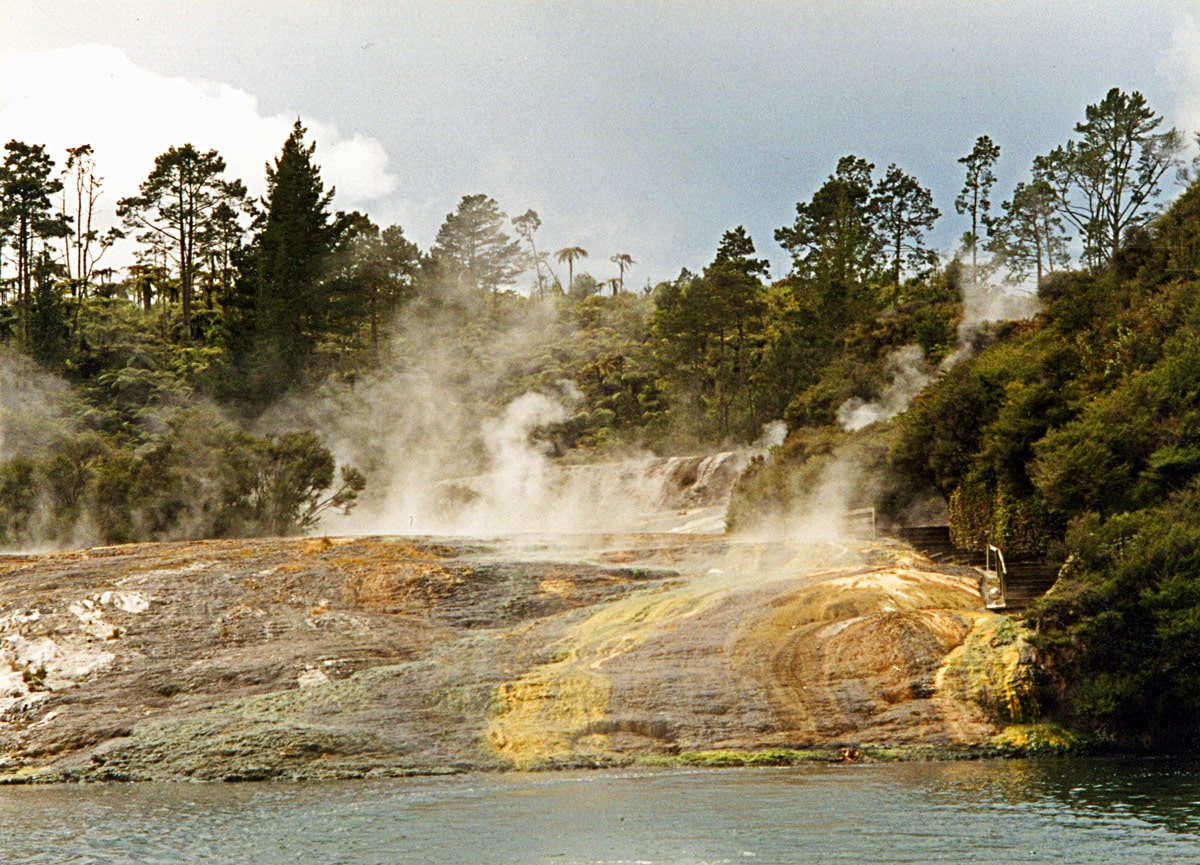
Waimangu geothermal area
New Zealand
Geothermal area, created by Mount Tarawera eruption in 1886. The area contains many interesting features. Frying Pan Lake is the largest hot spring in the world – the area of this hot lake is 3.8 ha. Warbrick Terraces and Marble Terraces are sinter terraces in the process of formation. Inferno Crater is the largest geyser-like lake – a light blue steaming lake with a fluctuating water level.
Europe
Plitvice Lakes
Croatia
A unique, picturesque group of some 20 blue-green lakes arranged in a chain over the distance of 8 km, divided by natural dams of tufa. The tufa formation process is active, it forms by joint geological and biological processes. The stream between the lakes has multiple waterfalls, some up to 80 m tall.
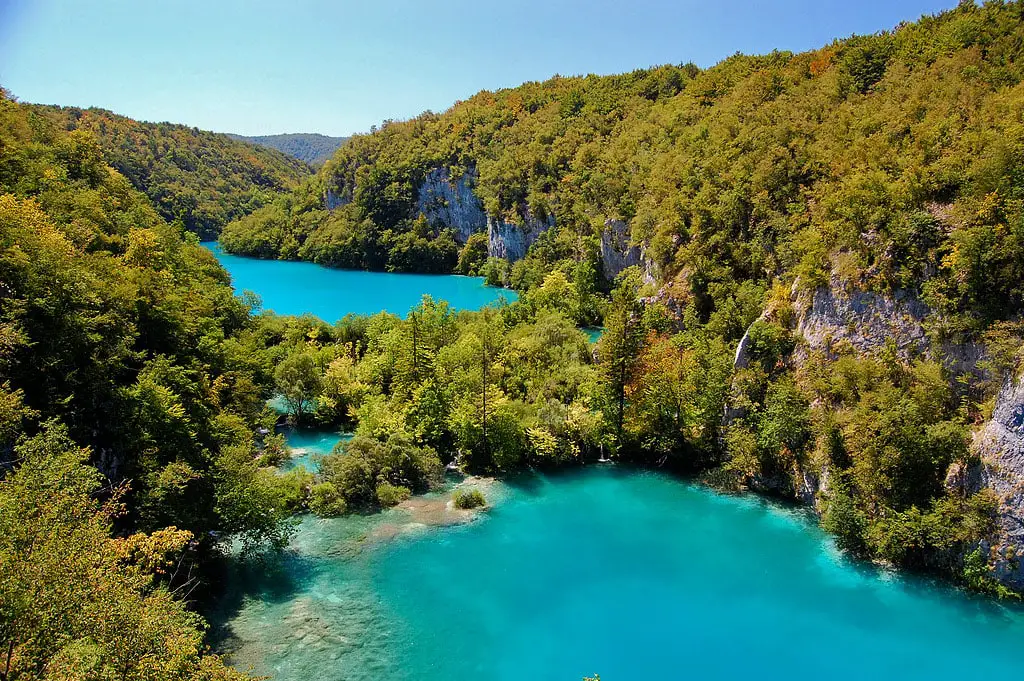
Kravica
Bosnia and Herzegovina
This impressive waterfall falls over a natural travertine barrage. The waterfall is some 120 m wide and 28 m high.
Skradinski Buk
Croatia
Group of impressive waterfalls over tufa dams. Over the length of 400 m, there are 17 waterfalls with a total height difference of 47.7 m.
Usterling Growing Rock
Germany
Almost unique natural landmark – a naturally formed tufa wall with a stream flowing along its upper rim and depositing further extension to this cliff. Wall is some 40 – 50 m long and up to 5.4 m tall.
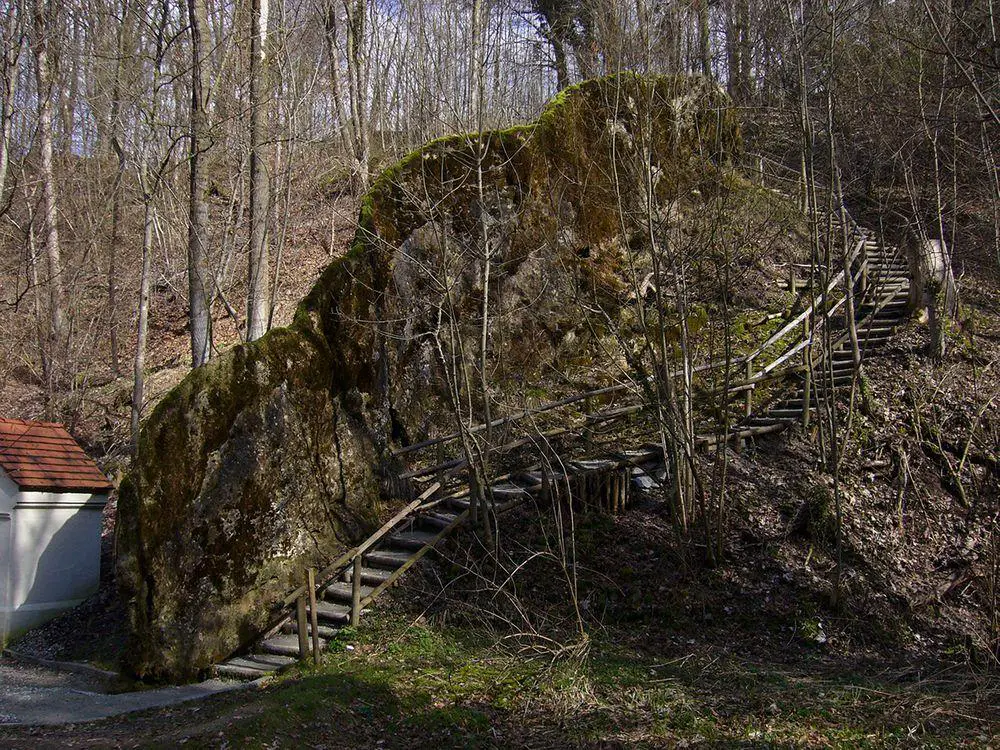
Troll springs
Svalbard (Norway)
Group of six hot springs that are some of the northernmost in the world. The temperature of the water up to 28.3 °C. Springs have formed impressive travertine terraces with pools of different sizes. Part of the pools is dry and deteriorating.
North America
Mammoth Hot Springs
United States
These hot springs have produced some of the most impressive travertine terraces in the world.
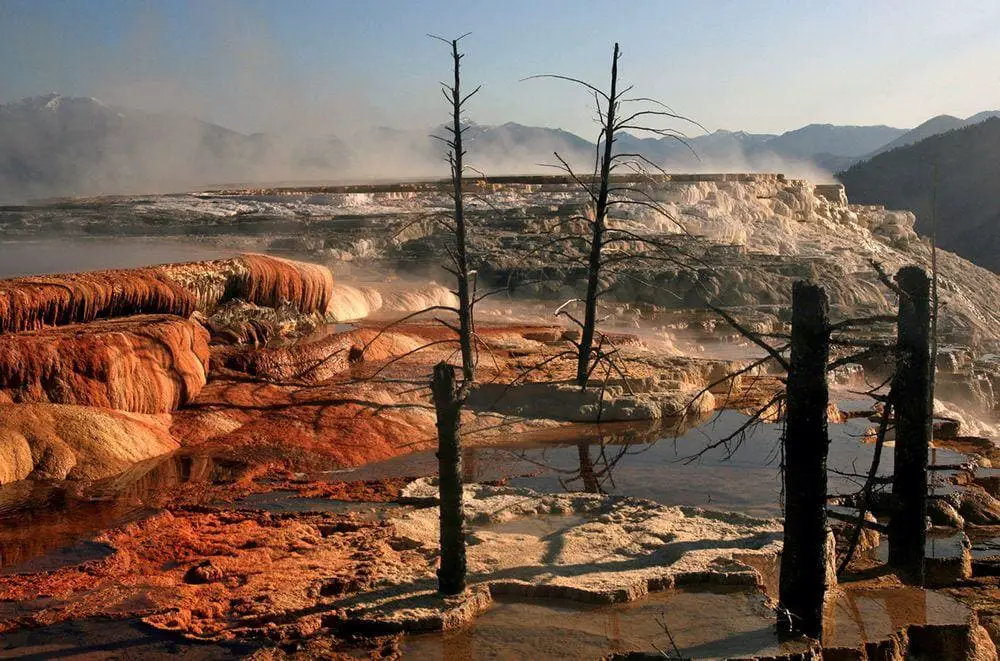
Grand Prismatic Spring
United States
The third largest hot spring in the world. The enormous spring pool and its surroundings are adorned with microbial mats in vivid colors. The spring pool has a diameter of 91 meters and a depth of 49 meters.
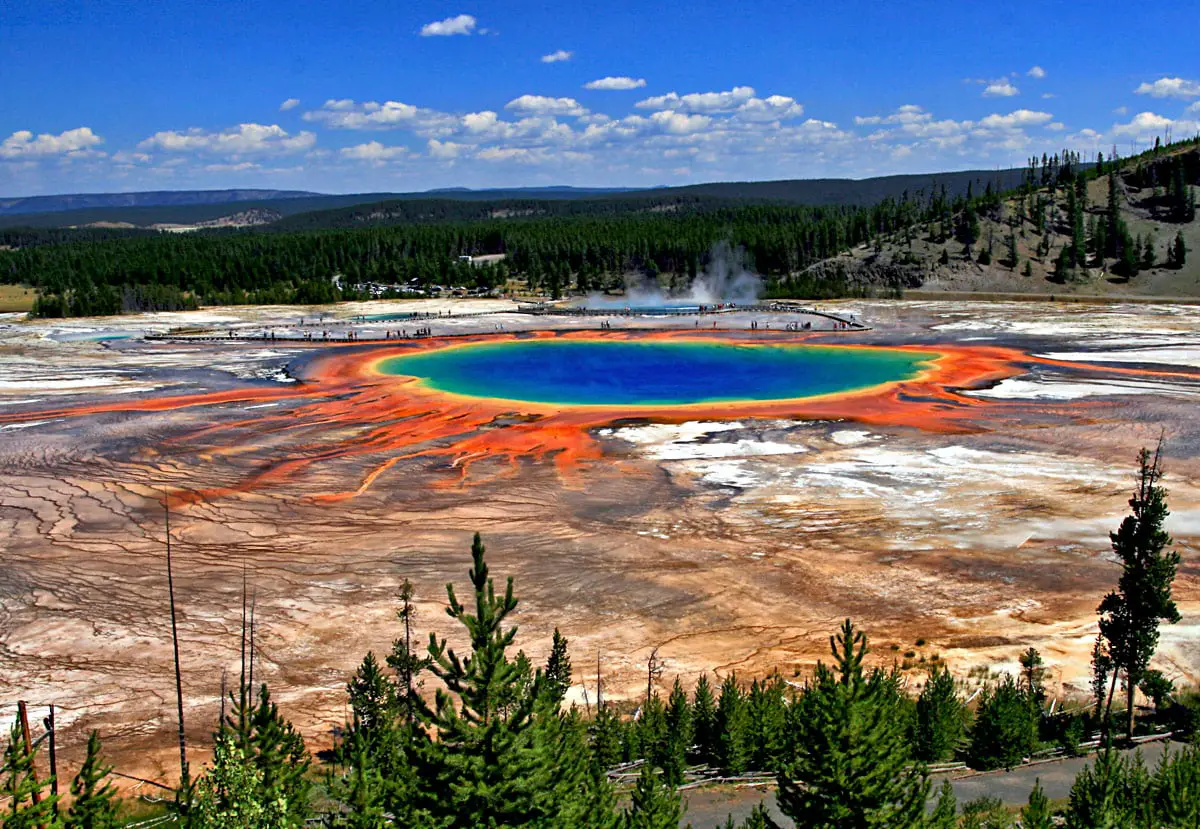
Rabbitkettle Tufa Mounds
Canada
Two tufa and travertine mounds, the largest is 27 m high and 79 m wide. These mounds have been formed by warm thermal springs (21°C) and consist of numerous smaller rimstone pools.
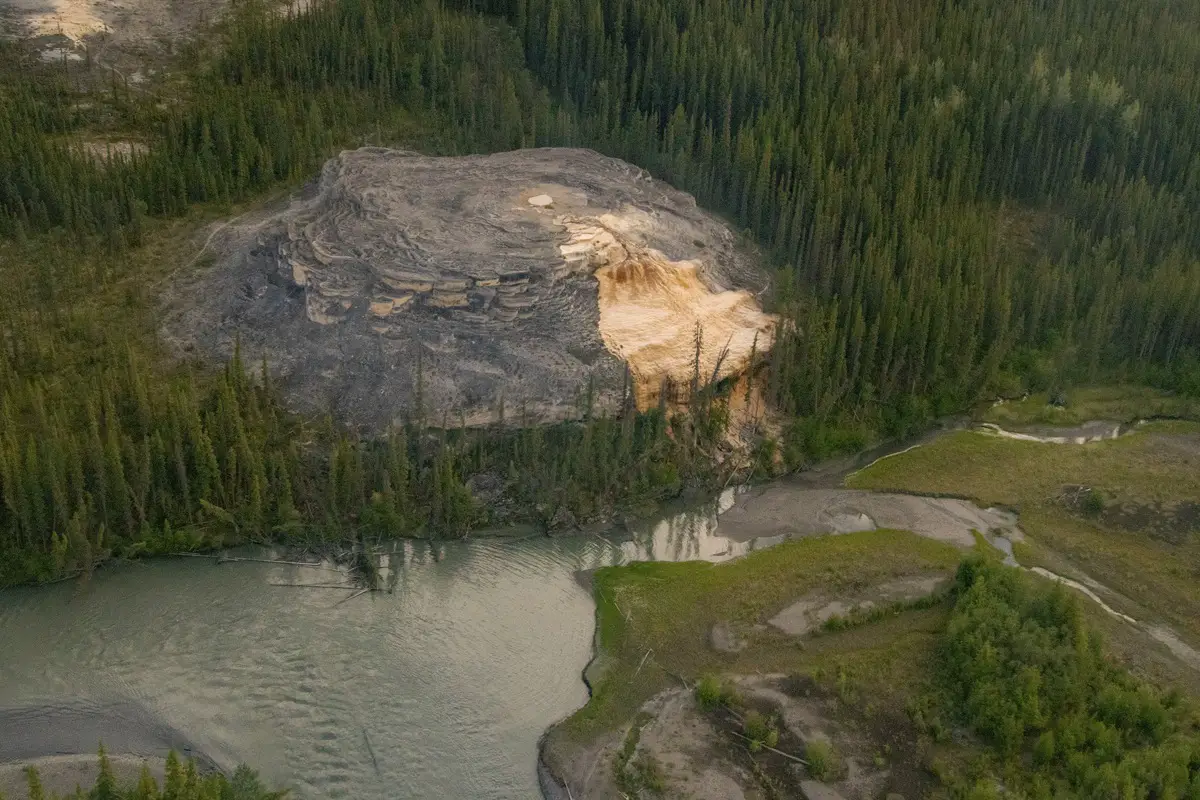
Semuc Champey
Guatemala
Tufa terraces over a 300 m long section of Cahabòn River, forming a group of small, emerald-colored pools. These pools are in a deep, dangerous canyon and end with a cave, where the river disappears.
Hierve el Agua
Mexico
One of the highest single travertine terraces. It is formed by thermal springs. This bright white stone “waterfall” is 12 – 30 meters high.
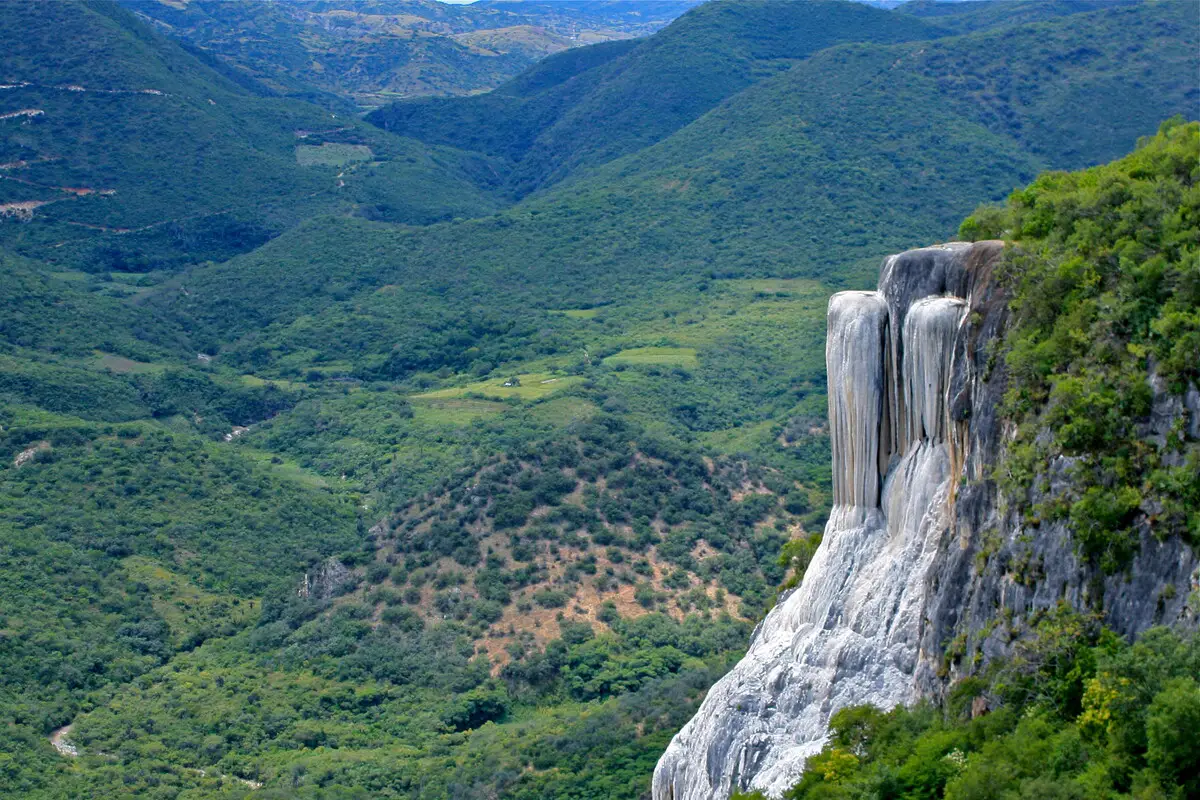
Dunn’s River Falls
Jamaica
Approximately 55 m tall waterfall with many cascades and spectacular tufa formations. Waterfall ends directly in the sea. Popular tourist destination, tourists enjoy climbing the falls.
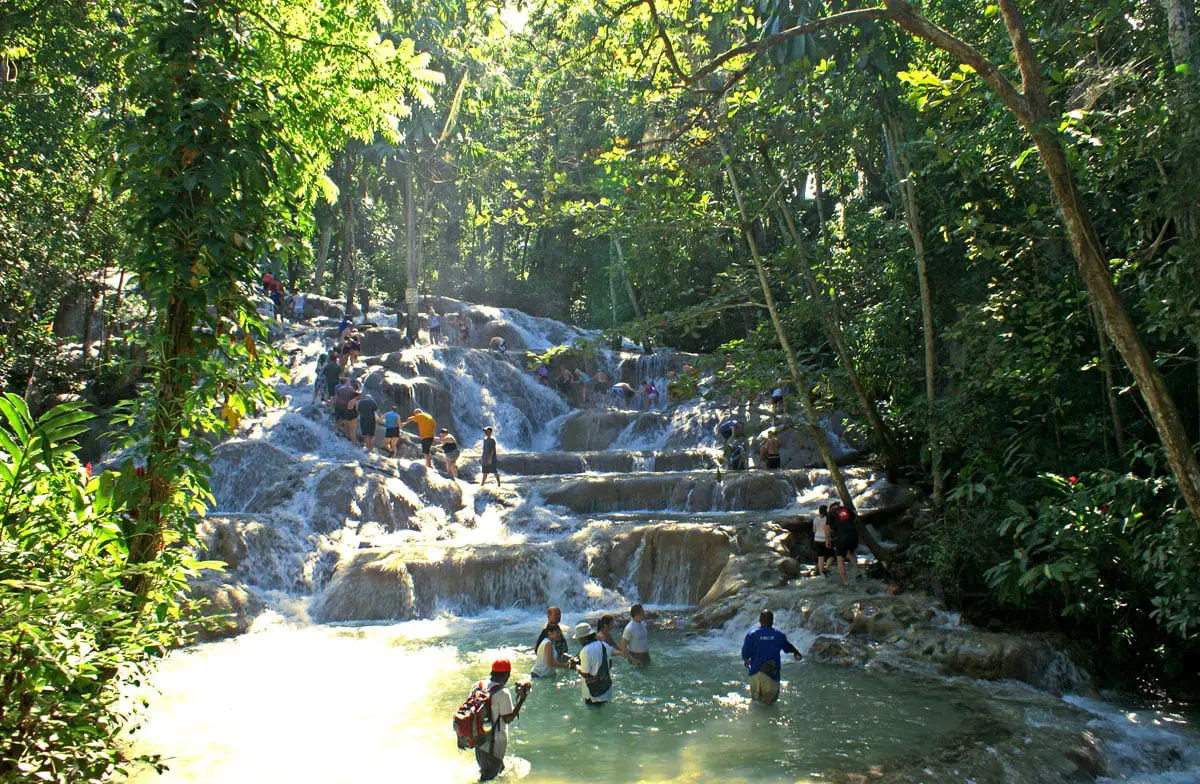
South America
Puente del Inca
Argentina
Highly unusual natural wonder – a natural arch over Vacas River with hot springs and large travertine formations next to it. The natural bridge is 48 m long, 28 m wide, and 8 m thick, and the river flows 27 m below it.
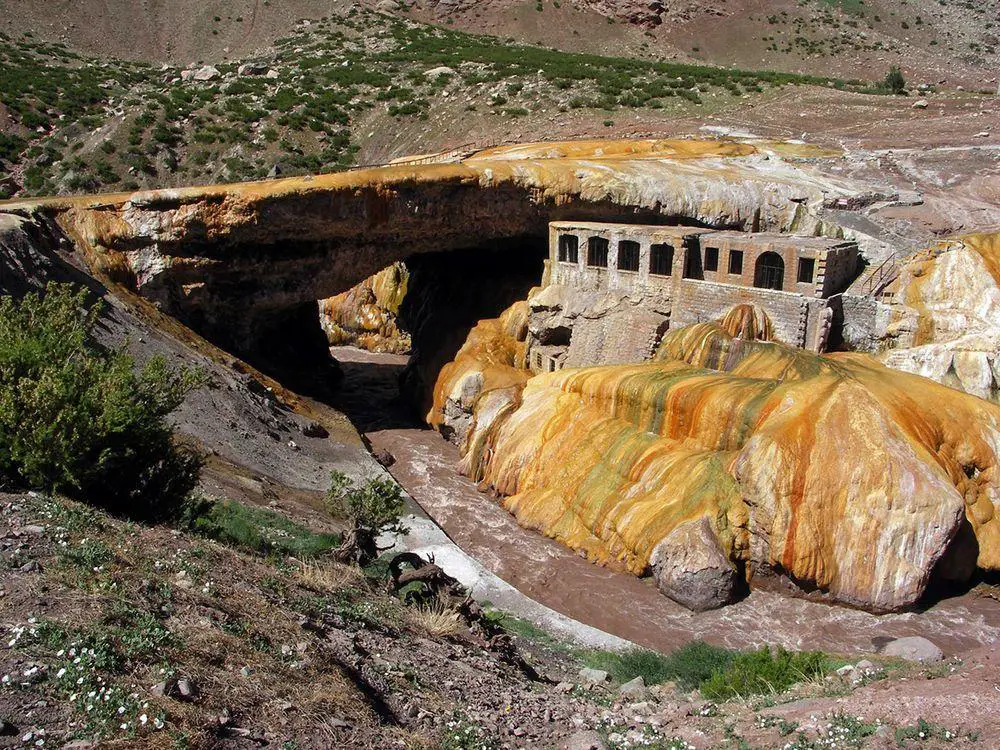
Laguna Roja
Chile
Bright red lake fed by hot springs, 40 – 50 °C warm, with travertine formations around the lake. Nearby also yellow and green lakes. Lakes are located at 3,700 m above sea level.
 Recommended books
Recommended books
Karst Hydrogeology and Geomorphology
Originally published in 1989, Karst Geomorphology and Hydrology became the leading textbook on karst studies. This new textbook has been substantially revised and updated.
Travertine
During the spring of 1960, an uncle showed me a ‘petrifying spring’ near Plaxtol in Kent Dwhere twigs had been encased in a calcareous jacket. It became apparent that there was a wealth of information about a rock whose formation was so rapid, that the process could be studied in days rather than years – an exceptional state of affairs. A search of the literature also revealed that the rock, a form of travertine, had other unusual features.

